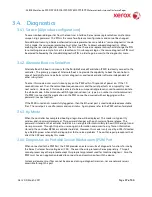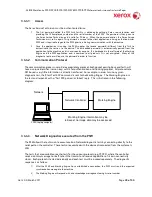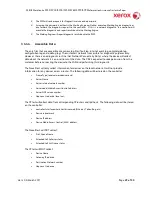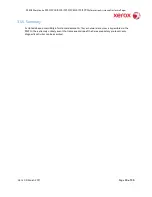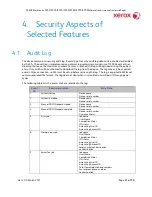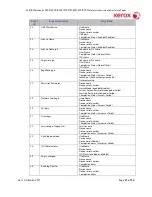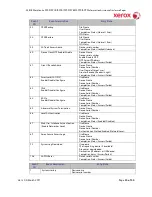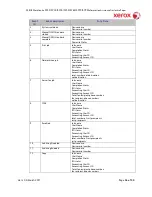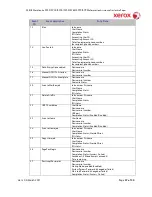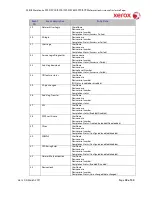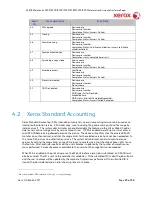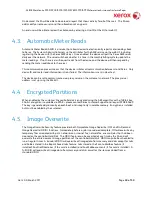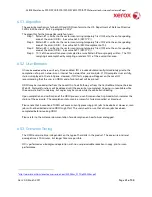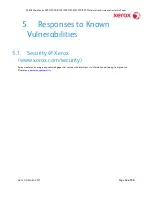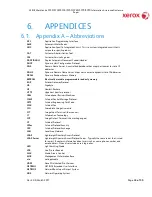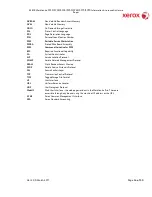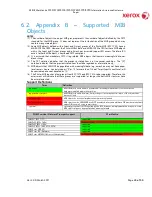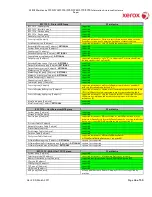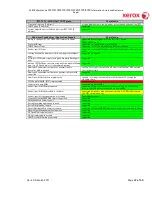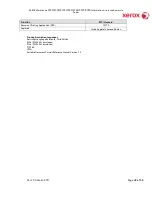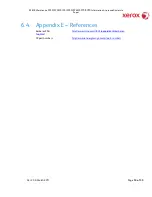
XEROX WorkCentre
5735/5740/5745/5755/5765/5775/5790
Information Assurance Disclosure Paper
Ver. 2.00, March 2011
Page
41 of 50
4.5.1.
Algorithm
The overwrite mechanism for both IIO and ODIO conforms to the U.S. Department of Defense Directive
5200.28-M (Section 7, Part 2, paragraph 7-202
2
.
The algorithm for the Image Overwrite feature is:
Step 1: Pattern #1 is written to the sectors containing temporary files (IIO) or to the entire spooling
area of the disks (ODIO). (hex value 0x35 (ASCII “5”)).
Step 2: Pattern #2 is written to the sectors containing temporary files (IIO) or to the entire spooling
area of the disks (ODIO). (hex value 0xCA (ASCII compliment of 5)).
Step 3: Pattern #3 is written to the sectors containing temporary files (IIO) or to the entire spooling
area of the disks (ODIO). (hex value 0x97 (ASCII “ú”)).
Step 4: 10% of the overwritten area is sampled to ensure Pattern #3 was properly written. The 10%
sampling is accomplished by sampling a random 10% of the overwritten area.
4.5.2.
User Behavior
IIO can be enabled at the local UI only.
Once enabled, IIO is invoked automatically immediately prior to the
completion of a print, network scan, internet fax, network fax, or e-mail job. If IIO completes successfully,
status is displayed in the Job Queue. However, if IIO fails, a popup will appear on the Local UI
recommending that the user run ODIO, and a failure sheet will be printed.
ODIO may be invoked either from the Local UI in Tools Pathway or from the CentreWare Internet Services
Web UI. Network functions will be delayed until the overwrite is completed. Copying is unavailable while
the overwrite itself is underway, but copies may be made while the controller is booting.
Upon completion and verification of the ODIO process, a confirmation sheet is printed which indicates the
status of the overwrite. The completion status can be successful, failed, cancelled, or timed-out.
Please note that invocation of ODIO will cause currently processing print jobs to be aborted. However, scan
jobs will not be aborted and so ODIO might fail. The user should insure that all scan jobs have been
completed before invoking ODIO.
Please refer to the customer documentation for a description on how failures are logged.
4.5.3.
Overwrite Timing
The ODIO overwrite time is dependent on the type of hard disk in the product. The overwrite and reset
average time is 10 minutes, but longer times are possible.
IIO is performed as a background operation, with no user-perceivable reduction in copy, print or scan
performance.
2
http://www.dtic.mil/whs/directives/corres/archives/520028m_0173/p520028m.pdf

